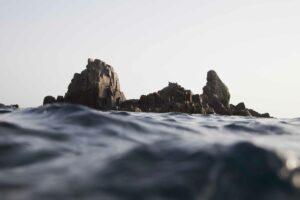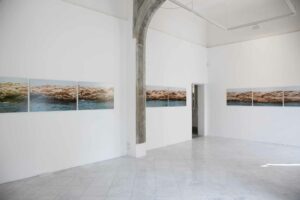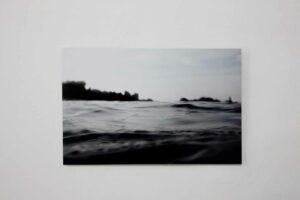
Deserted Islands of the Mediterranean
2011 ff
Photographs, film, drawings, sound
Contributors: Giovanna Silva, Amedeo Martegani, Giuseppe Ielasi & Renato Rinaldi, Giulia Di Lenarda, Armin Linke
A research project narrating the spaces, sounds and reasons for the deserted islands of the Mediterranean, using photography, drawings, digital audio and video.
More than 200 deserted islands have been counted. “Geographers say there are two kinds of islands. Continental islands are accidental, derived islands. They are separated from a continent, born of disarticulation, erosion, fracture: they survive the absorption of what once contained them. Oceanic islands are originary, essential islands. Some rise slowly; some disappear and then return, leaving us no time to annex them. These two kinds of islands, continental and originary, reveal a profound opposition between ocean and land. Continental islands serve as a reminder that the sea is on top of the earth, taking advantage of the slightest sagging in the highest structures; oceanic islands, that the earth is still there, under the sea, gathering its strength to punch through to the surface. We can assume that these elements are in constant strife, displaying a repulsion for one another. In this we find nothing to reassure us.
The islands, and all the more so the deserted island, is an extremely poor or weak notion from the point of view of geography. This is to its credit. The range of islands has no objective unity, and deserted islands have even less. The deserted island may indeed have extremely poor soil. Deserted, the island may be a desert, but not necessarily. The real desert is uninhabited only insofar as it presents no conditions that by rights would make life possible, weather vegetable, animal, or human. On the contrary, the lack of inhabitants on the deserted island is a pure fact due to the circumstance, in other words, the island’s surroundings. The island is what the sea surrounds. What is deserted is the ocean around it. It is by virtue of circumstance, for other reasons that the principle on which the island depends, that the ships pass in the distance and never come ashore.” (from: Gilles Deleuze, Desert Island and Other Texts, Semiotext(e), Los Angeles, 2004)
The exhibition was accompanied by a first publication: LE ISOLE DESERTE DEL MEDITERRANEO/ DESERTED ISLANDS OF THE MEDITERRANEAN
Texts: Alessandro Petti and Gilles Deleuze
Map: MIT Seansable City Lab
Vinyl Record 45 rpm, ca. 9 min
a+mbookstore edizioni, Milan, 2009
Armin Linke
Armin Linke, born in Milan in 1966, is a photographer and filmmaker combining a range of contemporary image-processing technologies to blur the border between fiction and reality. Linke investigates the formation – so called Gestaltung – of the natural, technological and urban environment in which we live. His photographs and films function as tools to learn about the different design strategies. By working with his own archive, as well as with other media archives, Linke challenges the conventions of photographic practice. Hence the questions of how photography is installed and displayed become increasingly important. In a collective approach with other artists, as well as with curators, designers, architects, historians, philosophers and scientists, the narratives of his works expand on the level of multiple discourses. Linke has served as a research affiliate at the MIT Visual Arts Program, guest professor at the IUAV Arts and Design University in Venice, and professor of photography at the Karlsruhe University for Arts and Design. Currently Armin Linke is guest professor at ISIA, Urbino (IT).






